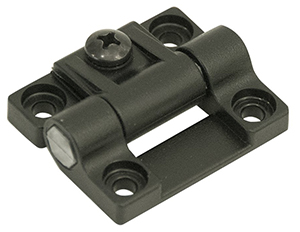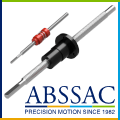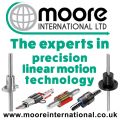
Posted to News on 3rd Nov 2021, 00:00
The types of hinges and where to use them
Choosing the appropriate hinge is an important step in the design process of many product applications. Though it seems simple enough, there are a number of factors that must be considered when deciding which type of hinge to use in an application, as Stewart Beck, global product manager at Southco, explains.

In applications to join together a door, lid or panel to another panel or frame and allow movement of one relative to the other, hinges are often overlooked until the final stages of the design process. This can result in a rush to find a hinge that will offer the desired level of operation for the end use application. In some cases, a product design project can be put on hold when the chosen hinge does not function as anticipated or fails testing.
To prevent this from happening, hinges should be incorporated at the beginning of the design process to prevent costly design revisions. But with so many hinge types available, how can engineers ensure that they are choosing the right one? In order to select the right hinge for an application, engineers need to be aware of the different types of hinges available and how they can be used.
The primary factor that weighs into the hinge decision making process is the level of operation needed by the end user to access a door or panel on a piece of equipment. There are countless ways that this can be accomplished. The following are some of the most commonly used hinge types that engineers can use to meet their application needs.
Free swinging hinges: These are the simplest form of hinges, where a pin or shaft creates a pivot axis. The pin or shaft is generally integrated with one leaf, which leaves the other leaf free to rotate. This system allows the door to move freely along its path from open to close, allowing the user to easily move the door to access the inner enclosure.
The simplest function of a free-swinging hinge is to mount the hinge pivot externally, on the outside of a door or panel. This prevents the door from conflicting with the frame when opening or closing. Mounting the hinge externally helps to maximize the available space inside the enclosure as well.
Concealed hinges: Aesthetics can play a role in the type of hinge selected for an application. If the hinge must be hidden to improve the look of the outer cabinet door, concealed hinges are a great option. Concealed hinges can create a smooth outer panel by hiding the hardware inside of the enclosure.
Security can also be improved through the use of concealed hinges, with unauthorised access more challenging if the hinge is not a visible attack point. However, concealed hinges often take up valuable space inside of the enclosure, which can be an issue in some applications.
Removable hinges: If a user needs to access the interior of an enclosure, especially in tight space, removable hinges are ideal. Many free-swinging hinges have the ability to separate the hinge leaves, which allows users to completely remove the door or lid. Engineers can also choose a hinge that incorporates a spring-loaded mechanism which facilitates the removal of hinge pins, while the hinge components remain attached to the door.
Detent hinges: These are designed to hold connected objects in place and are permanently attached to a door or frame. The user can open the door and have it remain in place at a predetermined angle without the use of secondary mechanical supports, such as gas struts. Certain detent hinges can be preset by the manufacturer during the design process to open doors at predetermined angles.
Torque hinges: Also known as friction hinges, this type of hinge allows users to hold a door or lid at any angle and have it stay in place. These differ from detent hinges, where the position of the door or lid is determined by the manufacturer. Torque hinges allow engineers to customise the forces and therefore the feel of a panel, with the aim of making the door opening/closing intuitive for the end-user.
A torque hinge resists the pivoting motion, which can be useful in situations where the goal is to hold the panel in position for safety or aesthetic reasons. Torque hinges use a series of spring components to add friction to the hinge’s shaft. This allows the hinge to closely control the friction in each rotational direction of the hinge.
One simple way torque hinges can improve the end user experience is by incorporating clutch elements into the hinge, which release the friction in the opening direction and make it much easier to lift, while still maintaining the friction that resists unwanted downward movement. As a result, end users will be able to easily open the lid and ensure that it stays open safely, without the use of any additional hardware.
Counterbalance hinges: There are some situations where users may struggle to safely open a lid or panel due to its weight or size. Gas struts may be used in this case, but there are applications where they take up too much space or cannot hold the weight of the panel. In these applications, counterbalance hinges could be more effective option. Counterbalance hinges utilise spring energy to help the user to open the lid.
There are other factors that engineers must to take into account when choosing the appropriate hinge for their application. Material choice can affect the performance and cost of the hinge. The material choice will depend on the strength required to safely open the door and the environment the hinge will operate in.















